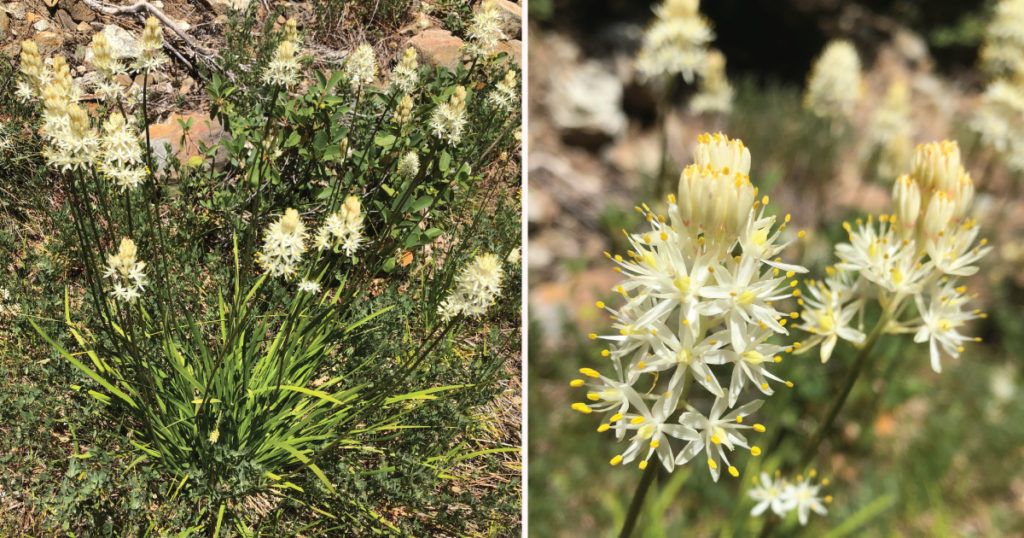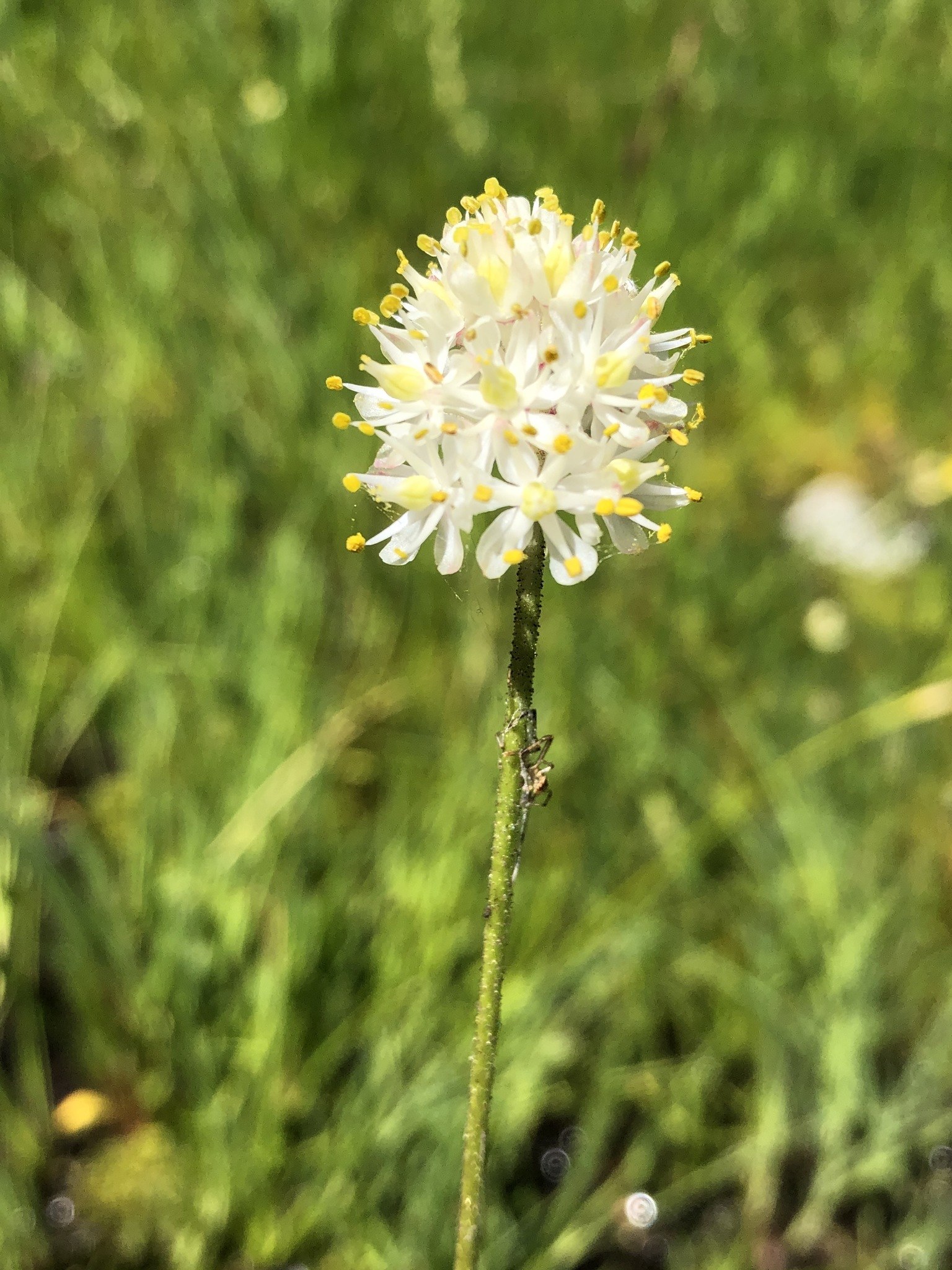Sticky trap carnivory discovered in western false asphodel (Triantha occidentalis)
The botanical world is being rocked by a new lineage of carnivorous plants described by Qianshi Lin et al. (August 2021)! Previous to this discovery scientists have recognized only 11 independent origins of plant carnivory—and now there is a 12th. This cryptic carnivore secretes a digestive enzyme from its annual flower stalk to supplement upwards of 2/3 of its diet.

Carnivorous plants have adapted to grow in places where nutrients are deficient. In western North America this often means peatland bogs. While carnivorous plants generate some energy from photosynthesis they supplement by trapping and consuming animals like insects and other arthropods.
Among monocots, Triantha is the only instance of a sticky-trap mechanism and a clearly documented case of holocarnivory, marked by enzymatic secretion consistent with prey digestion. Its trap is unique among carnivorous plants and, unexpected based on theory, in placing all of its prey-capture sites next to its insect-pollinated flowers. Given the existence of Triantha in close proximity to major urban centers on the Pacific coast, our study serves as a vivid reminder that other cryptic carnivores may yet remain to be discovered.
– Qianshi Lin et al , 2021
It is so interesting to have personally known this species for years (it has been described by science for 100 years, and is also featured in “Wildflowers of California’s Klamath Mountains“) and then have this discovery emerge that flips our understanding of this species. It is also compelling to consider that, for a short time every summer, this species both preys on insects and enlists them for pollination duties at the same time!
The wonders of nature never cease to amaze—what will be the next cryptic carnivore to shift our understandings? Keep your eyes open and stay curious!




[…] are learning new things about carnivorous plants all the time. In 2019, it was discovered that the western false asphodel (Triantha occidentalis), secretes a sticky substance from its stem […]